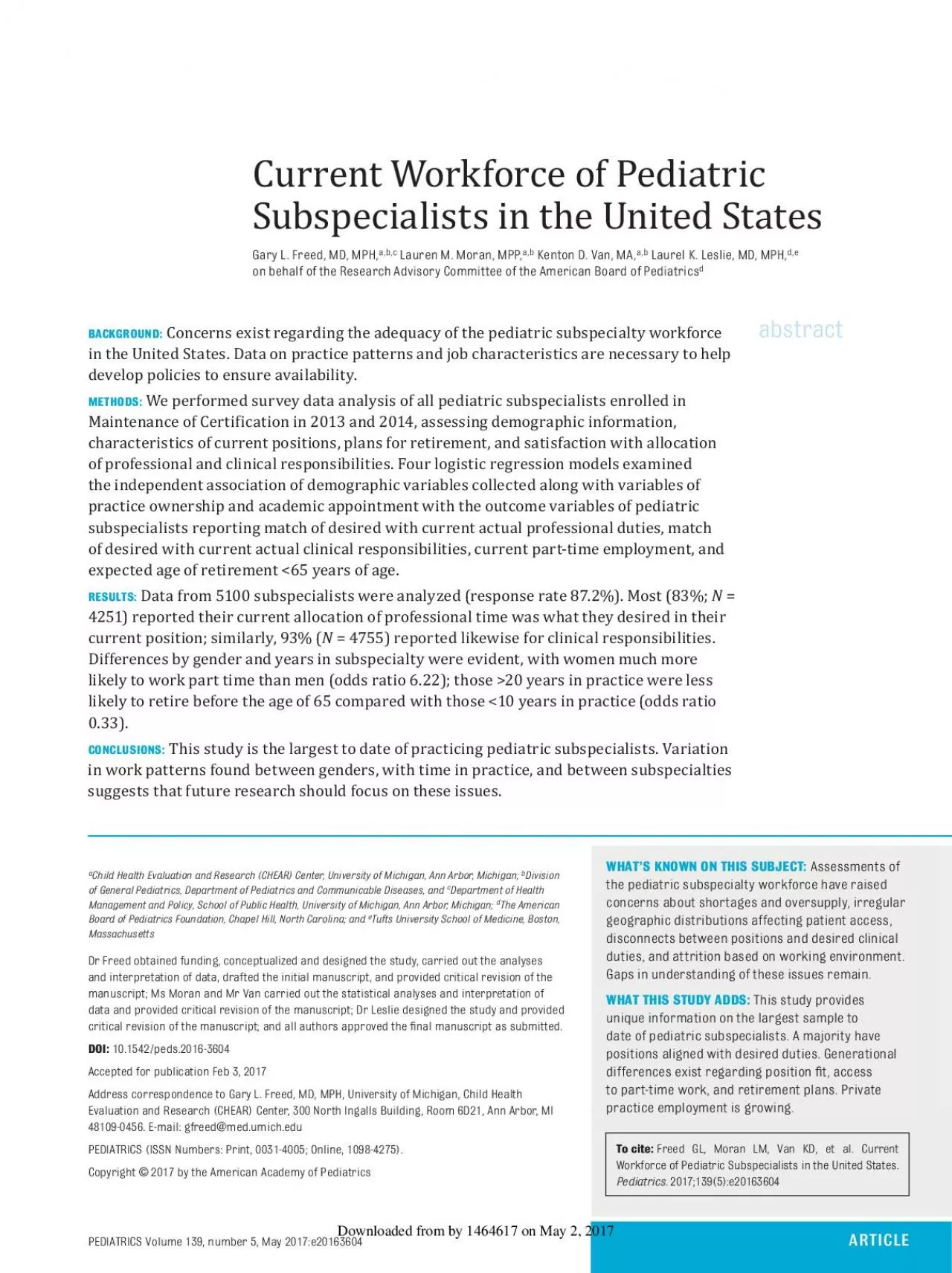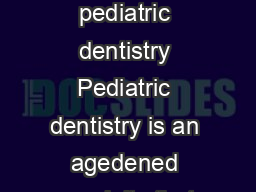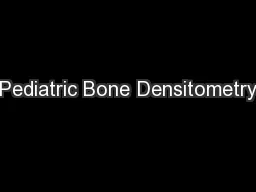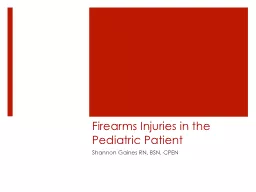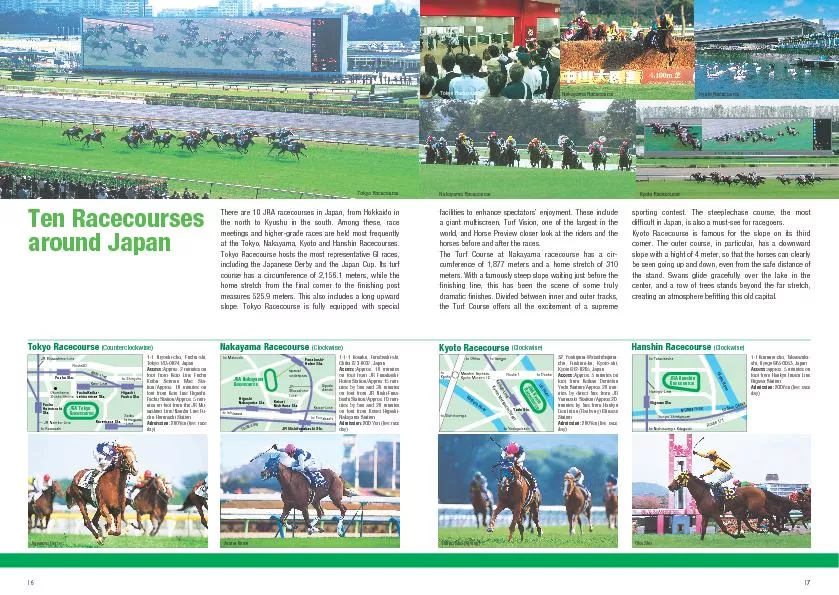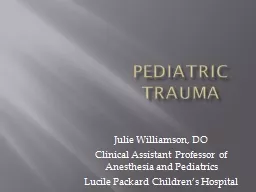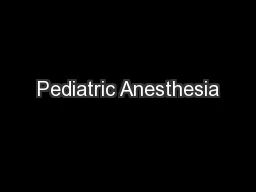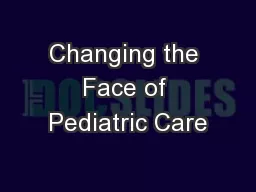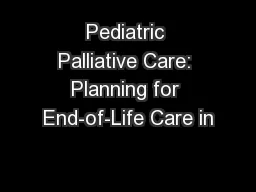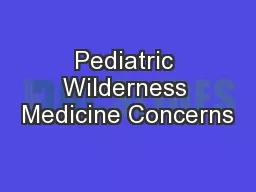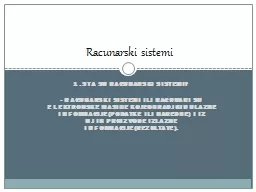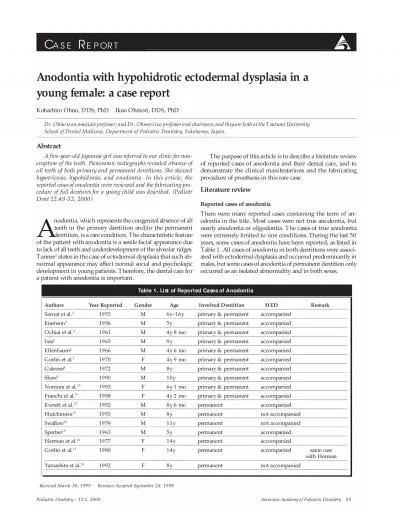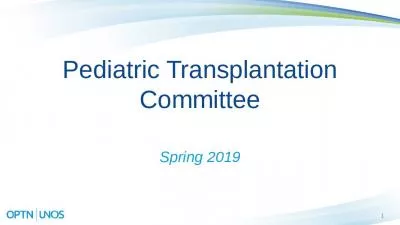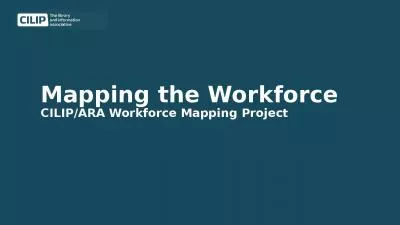PDF-ARTICLECurrent Workforce of Pediatric Subspecialists in the United Sta
Author : catherine | Published Date : 2021-09-30
ab Lauren M Moran MPPa Kenton D Van MAa Laurel K Leslie MD MPHdeabstractBACKGROUND Concerns exist regarding the adequacy of the pediatric subspecialty workforce
Presentation Embed Code
Download Presentation
Download Presentation The PPT/PDF document "ARTICLECurrent Workforce of Pediatric Su..." is the property of its rightful owner. Permission is granted to download and print the materials on this website for personal, non-commercial use only, and to display it on your personal computer provided you do not modify the materials and that you retain all copyright notices contained in the materials. By downloading content from our website, you accept the terms of this agreement.
ARTICLECurrent Workforce of Pediatric Subspecialists in the United Sta: Transcript
Download Rules Of Document
"ARTICLECurrent Workforce of Pediatric Subspecialists in the United Sta"The content belongs to its owner. You may download and print it for personal use, without modification, and keep all copyright notices. By downloading, you agree to these terms.
Related Documents

